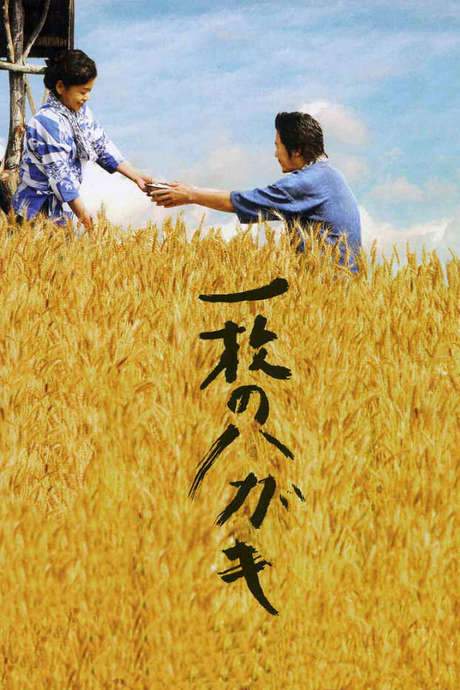
Postcard
Year: 2010
Runtime: 114 mins
Language: Japanese
Director: Kaneto Shindô
In the waning months of World War II, seasoned soldier Keita is given a postcard by a fellow infantryman who believes he will not survive the front. When the war finally ends, Keita seeks out the fallen soldier’s widow, Yuko, and discovers the heartbreaking hardships and lingering sorrow that have defined her life since his loss.
Warning: spoilers below!
Haven’t seen Postcard yet? This summary contains major spoilers. Bookmark the page, watch the movie, and come back for the full breakdown. If you're ready, scroll on and relive the story!
Postcard (2010) – Full Plot Summary & Ending Explained
Read the complete plot breakdown of Postcard (2010), including all key story events, major twists, and the ending explained in detail. Discover what really happened—and what it all means.
Near the end of the Pacific War, Sadazo Morikawa [Naomasa Musaka] is one of a hundred overaged conscripts assigned to cleaning duty aboard the navy. When the shift ends, a lottery selects the next tasks, and Sadazo is sent to the Philippines, fearing he may not survive. He entrusts a comrade, Matsuyama [Etsushi Toyokawa], with delivering a postcard to his wife, Tomoko [Shinobu Ôtake], to tell her he received it before he died. This quiet plea threads through a life shaped by duty, fear, and the slow erosion of hope.
Earlier in the siege of life, Sadazo leaves behind his parents, Yukichi Morikawa [Akira Emoto] and Chiyo Morikawa [Mitsuko Baisho], as well as his wife Tomoko, before a new chapter begins. A military official later confirms Sadazo’s death, a blow that reverberates through the family. Desperate and bound by tradition, Sadazo’s parents urge Tomoko not to abandon her obligations and instead consider marrying their younger son Sanpei [Maiko Kawakami]. Tomoko agrees to the match, but Sanpei’s path is grim: enlisted and pressured, he faces the harsh reality of war, ultimately dying in service. The years of conflict tighten their hold on the family, leaving little room for mercy or choice.
Back home, the toll continues: Yukichi Morikawa dies from a heart condition, and Chiyo Morikawa, trying to shield her family from further ruin, gives Tomoko some money before taking her own life. The war’s end arrives as an uneasy calm, and Matsuyama returns to Japan to find a country—and a household—unmade by absence and betrayal. His wife has fled after an affair with his father and now works as a bar hostess in Osaka, a fact that unsettles him as he encounters a version of home that no longer fits.
The encounter with Tomoko at her house becomes a pivotal moment. He recounts Sadazo’s fate and discloses a dream of leaving for Brazil, carrying with him 200,000 yen earned from selling his fishing boat. He even offers Tomoko half of that sum, but she refuses, choosing a harsher independence that tests both of their loyalties. A confrontation with Kichigoro Izumiya [Ren Osugi], another suitor of Tomoko, punctuates the fragility of their attachment and the stubbornness of pride in the face of loss.
Yet out of the tension grows a fragile agreement: Tomoko and Matsuyama will go to Brazil together. They perform a final, intimate act of remembrance by burning Sadazo and Sanpei’s ashes, a ritual that signals both release and renunciation. Tomoko, overwhelmed, drinks heavily and sets fire to the old house, from which Matsuyama rescues her. In the aftermath, they choose to remain in Japan and cultivate barley on the site of the former home, a quiet assertion of steadiness amid ruin. The film closes with the two of them standing together in a barley field, a simple, stubborn image of endurance in the wake of war’s long shadow. The narrative lingers on themes of memory, duty, and the resilience of two people choosing to stay connected to the land they occupy.
Last Updated: November 22, 2025 at 15:59
Unlock the Full Story of Postcard
Don't stop at just watching — explore Postcard in full detail. From the complete plot summary and scene-by-scene timeline to character breakdowns, thematic analysis, and a deep dive into the ending — every page helps you truly understand what Postcard is all about. Plus, discover what's next after the movie.
Postcard Timeline
Track the full timeline of Postcard with every major event arranged chronologically. Perfect for decoding non-linear storytelling, flashbacks, or parallel narratives with a clear scene-by-scene breakdown.

Characters, Settings & Themes in Postcard
Discover the characters, locations, and core themes that shape Postcard. Get insights into symbolic elements, setting significance, and deeper narrative meaning — ideal for thematic analysis and movie breakdowns.



